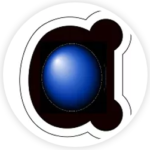Incredibly, Three Planetary Systems Spotted Forming Around One Binary Star
A study of the disk around a pair of stars has found something extraordinary: the origins of what could become three separate planetary systems, one around each star and another orbiting both.
Try Adsterra Earnings, it’s 100% Authentic to make money more and more.

The majority of stars in the galaxy exist in binary systems. Consequently, there is considerable interest in the prospects for planets, and life, around these.
We know planets can exist orbiting one star in a widely spread system, or orbiting both when the pair is close together. Few, however, had considered the possibility of both in a single system, yet a paper to be published in The Astrophysical Journal (preprint on arXiv.org) reveals conditions that could lead to exactly that in a few million years.
Using the Very Large Array and the Atacama Large Millimeter/Submillimeter Array (ALMA) a team led by Dr Ana Karla Díaz-Rodríguez of the University of Manchester studied SVS 13, a pair of very young stars 980 light-years away.
Like other stars of similar age (single or paired), these two are surrounded by a disk of material that is slowly condensing and will eventually turn into planets, but closer examination reveals something else.
“Our results have revealed that each star has a disk of gas and dust around it and that, in addition, a larger disk is forming around both stars,” Díaz-Rodríguez said in a statement. “This outer disk shows a spiral structure that is feeding matter into the individual disks, and in all of them planetary systems could form in the future.”
 Model of the binary star system surrounded by gas and dust. The red and blue indicate the motion of the gas (red away, blue towards us) and the larger dust diak forming around both. Image credit: Díaz-Rodríguez et al., The Astrophysical Journal 2022
Model of the binary star system surrounded by gas and dust. The red and blue indicate the motion of the gas (red away, blue towards us) and the larger dust diak forming around both. Image credit: Díaz-Rodríguez et al., The Astrophysical Journal 2022The outer disk’s spiral arms extend hundreds of times further than the distance from the Earth to the Sun. It contains more than 50 times the mass of Jupiter. The radii of the two disks around each star are smaller than those usually found around single stars – the dust extends out to the orbit of Saturn and Uranus, respectively – and much less massive.
The component stars of SVS 13 are more than twice as distant from each other as the Sun is from Neptune. Their combined masses are less than that of the Sun, so – their red giant phase aside – they will never be very luminous. Any planet orbiting both will be almost as cold as an object traveling in interstellar space.
On the other hand, each star could eventually have its own habitable zone. To anyone living within that zone, the other star will look more like a bright planet than a second Sun.
 The actual images produced Atacama Large Millimeter/Submillimeter Array (ALMA) one of the largest radio telescopes on Earth is much less clear, looking more like an owl than two young stars. Image Credit:
The actual images produced Atacama Large Millimeter/Submillimeter Array (ALMA) one of the largest radio telescopes on Earth is much less clear, looking more like an owl than two young stars. Image Credit: Life in the SVS 13 system may one day be a quite realistic prospect. Discovery was made possible through tracking almost 30 different molecules in the disks, including 13 precursors of life.
SVS 13 has surprised astronomers before, corresponding author Dr Guillem Anglada of the Instituto de Astrofísica de Andalucía (IAA-CSIC) noted. In optical telescopes only one of the stars is visible, but both can be seen with radio instruments.
“It was very strange to discover a pair of twin stars where one of them seemed to have evolved much faster than the other,” Anglada said. “We designed several experiments to get more details and to find out if in such a case either of the stars could form planets. Now we have seen that both stars are very young, and that both can form planets.”
The process of disk formation around binary stars has been heavily debated previously, and we don’t yet know if SVS 13 is typical or an outlier. The pair are around five times more distant from each other than Alpha Centauri A and B, but may still serve as a good model for any planetary system there.
More Story on Source:
*here*
Incredibly, Three Planetary Systems Spotted Forming Around One Binary Star
Published By

Latest entries
 ! Без рубрики2024.10.28Oyun blackjack bir kumarhanede çevrimiçi masalbet: menşe yolu ve geliştirme eğlence
! Без рубрики2024.10.28Oyun blackjack bir kumarhanede çevrimiçi masalbet: menşe yolu ve geliştirme eğlence allPost2024.10.28LIVE: President Trump in Powder Springs, GA
allPost2024.10.28LIVE: President Trump in Powder Springs, GA ! Без рубрики2024.10.28test
! Без рубрики2024.10.28test Mostbet Interactive Us All Llc 6701 Middle Dr W Ste 1000, Los Angeles, Ca 90045 - 8452024.10.28“mostbet En Vivo: Haz Tus Pronósticos En Directo Y Disfruta De Su Buffering”
Mostbet Interactive Us All Llc 6701 Middle Dr W Ste 1000, Los Angeles, Ca 90045 - 8452024.10.28“mostbet En Vivo: Haz Tus Pronósticos En Directo Y Disfruta De Su Buffering”



